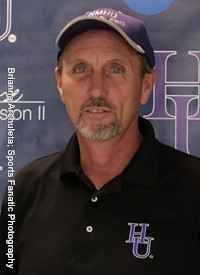August 15, 2022
The Fire Relief Center once located at the old Memorial Middle School gymnasium was moved to Sala de Madrid on the New Mexico Highlands University campus at the end of July. The Center will continue to provide hot meals twice a day at 9 a.m. and 11 a.m. And a range of services, including assistance with resources, accessing government relief, and navigating FEMA, are available to those affected by the Calf Canyon/Hermits Peak Fires and the subsequent flooding. The Fire Relief Center is open Monday through Friday from 9 a.m. to 1 p.m. at the Sala de Madrid, which is located on the corner of 8th Street and University Avenue.
The Fire Relief Center originally served as a Red Cross shelter for evacuees from the wildfires but the volunteer group, Neighbors Helping Neighbors, led by Janna Lopez, helped the shelter to successfully transition into a relief center.

Bob DeVries
The move to NMHU had to happen rapidly. Center volunteers were given 24 hours to vacate Memorial Middle School due to renovations happening there. Lopez teamed up with Bob DeVries, the cross-country track and field coach at NMHU, and a volunteer with Neighbors Helping Neighbors, and Jennifer Carbajal from the Mora/San Miguel Recovery Group and contacted Highlands looking for an adequately sized space for their operation. Denise Montoya and Roxanne Gonzalez offered the use of the Sala de Madrid.
The relief center is working to coordinate its efforts with the county, state, and private organizations. Highlands University has granted the center space on campus through the end of November.
According to DeVries, the center served up to 50 people per day at the height of the fires. A recent event at the center to help connect people with a variety of resources brought in 300 people. Now, Devries said, there are roughly 20-30 people who come into the center each day seeking meals or help with connecting to services.
“Everybody that comes gets signed up with FEMA—that’s important,” DeVries said. “We want to make sure that people are trying to access the government relief. There are countless programs through the state, through the forestry department, through FEMA, and it’s tough to navigate. FEMA is really difficult to navigate, and people get turned down, a lot of people get denied. You have to appeal. It’s all part of the process, and we are trying to educate people on that.”
The relief center also offers people a range of items they might need, most of which are supplied through donations.
“It’s 90 percent donations. Laundry detergent, paper towels, and toilet paper disappear as soon as soon as we get them, so we spend $50 on those things,” DeVries said. “We had some people drive all the way from Mesa, Arizona recently and they dropped off a truckload of donations. And different organizations in town, like Hacienda, the Rotary Club, and the Lion’s Club—they’ve all stepped up. It’s very much appreciated.”
DeVries said the relief center has also recently started a support group that meets on Thursdays at noon.
“We’ve had about a dozen people come in and they basically just talk about the things that they’ve gone through,” DeVries said. “And then, if they need help, we’ve got licensed counselors that are coming in to talk to people every Thursday.”
DeVries said the response from the community in support of those affected by the fires and floods has been tremendous in terms of donations, groups like the Methodist Church and Samaritan’s Purse helping people with cleanup, and community volunteers.
“The core group of volunteers are pretty much here every day. Three of the people that are here were directly impacted—evacuated, lost property, lost homes one of them totally lost his home, but he’s been he’s been here virtually every day, volunteering,” DeVries said. “It’s been an amazing effort on the part of the volunteers. It’s also been a really amazing effort on the part of the community, because we don’t have much money and the community has really stepped up.”
“Janna Lopez really deserves credit for getting this going. She was the driving force in getting it off the ground and has been here every day since day one,” DeVries said. “She’s done an amazing job—and she herself was evacuated. So, it says a lot about her.”
People needing assistance with rebuilding can also contact the Mora/San Miguel Long Term Recovery Group by calling or texting 505-398-3634.

